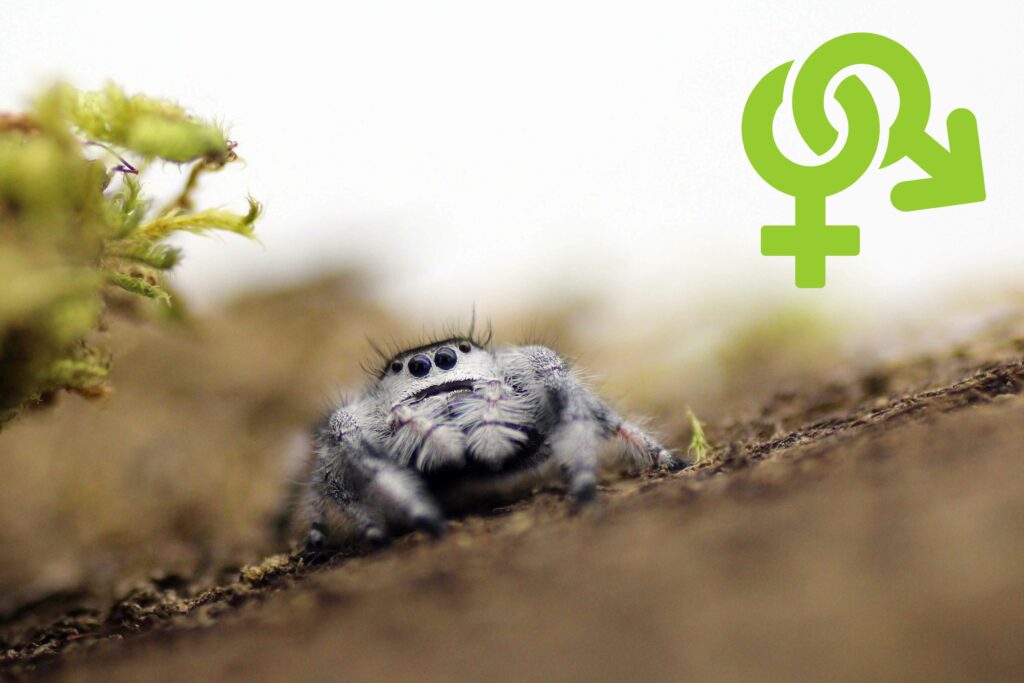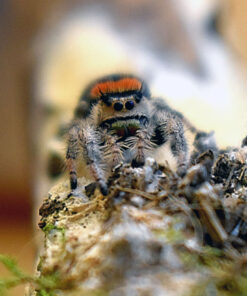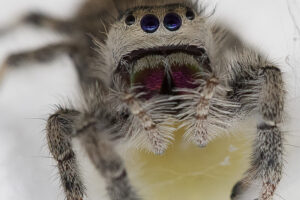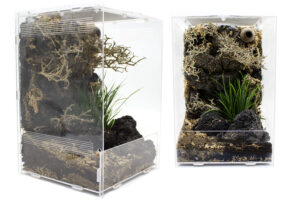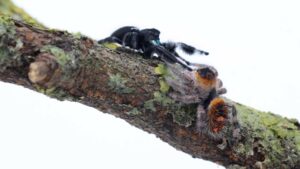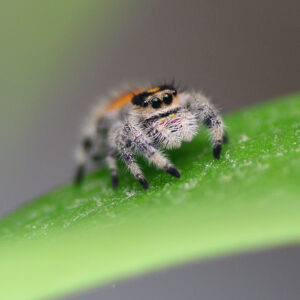Jumping spiders-Magazine
Sex determination of jumping spiders
The sex determination of jumping spiders is one of the central questions in jumping spider husbandry. This question should not only be answered when selecting breeding animals at an early stage. Even when keeping just one animal, you want to know what sex it is. First of all, sexing jumping spiders is not rocket science. Nevertheless, at the beginning you will probably be unsure in this area. But with a little practice and routine, there is nothing standing in the way of correct sexing.
The safe method of sex determination
For the sex determination of jumping spiders it is important to know that there is basically only one method of determination that gives 100% certainty about the sex of your jumping spider. This is done by looking at the morphological sexual characteristics, i.e. the sexual characteristics that can be seen on the external appearance of the spider. If your spider has clearly visible, comma-shaped thickenings at the end of its pedipalps, i.e. on its palps, it is 100% a male.

If your spider has a clearly visible epigyne between its book lungs, i.e. on the underside of the spider, it is 100% a female. The epigyne is the female sexual opening in jumping spiders and resembles a black, shiny dot.
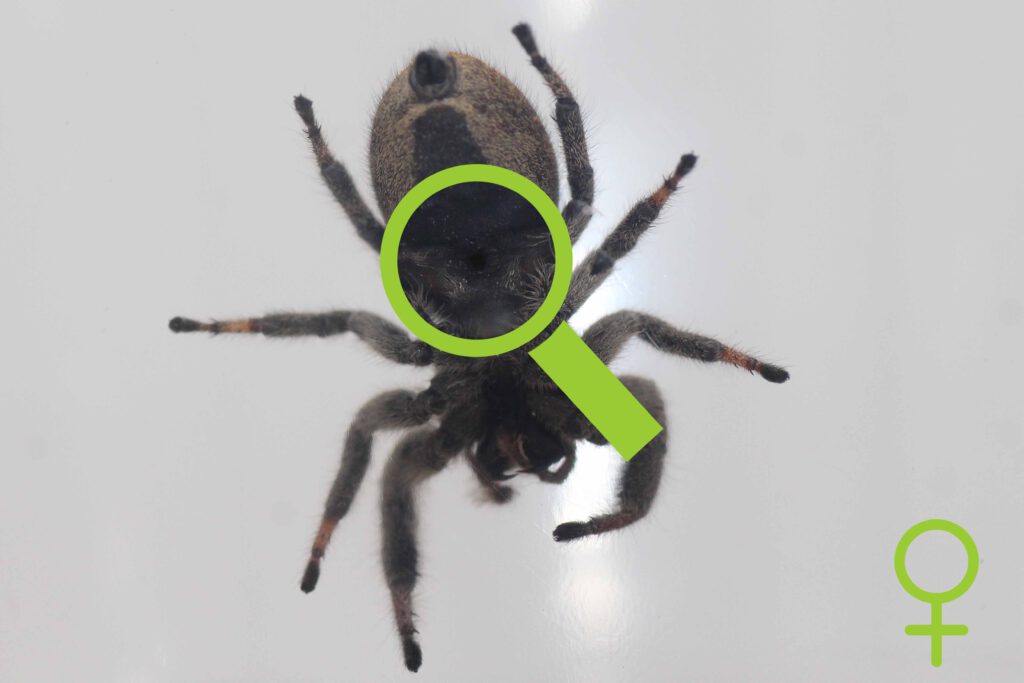
For both variants, it is advisable to use reading glasses or a magnifying glass. Often it is also helpful to take a photo with your smartphone, which you can then simply enlarge.
Only this way of sexing jumping spiders is valid for all different species, no matter if Phidippus regius, Phidippus audax, Phidippus adumbratus, etc.. In many species of jumping spiders the bulbs, as the thickenings on the pedipalps are called, and the epigyne are only visible after many moults. In some species, these features are only visible in the (sub-)adult stage, i.e. when the animals are almost fully grown. For this reason, one should refrain from hasty sex determination, e.g. based on colour or size.
Specifics of the sex determination of Phidippus regius
As Phidippus regius is the most common species of jumping spider in the terrarium hobby, we will dedicate a separate point to the sex determination of this species. The sex determination of Phidippus regius is very easy and early compared to other jumping spider species. At about FH4 the colour of the chelicerae, i.e. the teeth of your spider, changes. The fangs of the males turn into a green-blue tone, whereas the fangs of the females turn pink-pink. The easiest way to see the colour of the chelicerae is to shine a torch in the face of the spider. If the pedipalps, i.e. the palps, cover the fangs too much, it helps to feed the spider. If the jumping spider has food between its fangs, their colour is usually easier to recognise. If you have questions about what to feed my jumping spider, our article “Jumping spider food – The right diet” will certainly help you!

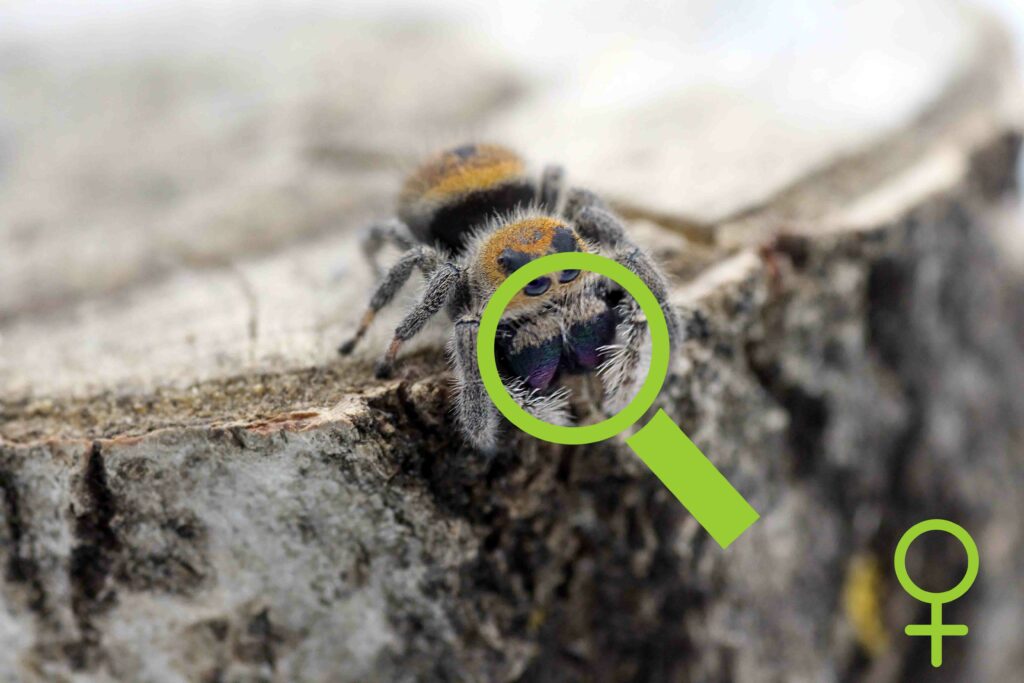
However, not only the colour of the teeth changes from about FH4, but also the general appearance of your spider changes. From this point on, the males usually remain exclusively black and white, whereas the females turn orange, red, brown, grey or white depending on their local form. While the above characteristics are all good clues to the sex of your jumping spider, only the external sexual characteristics listed above offer 100% certainty.


So sexing jumping spiders is not that difficult. Please make sure that all characteristics are correct when determining the sex of Phidippus regius. This increases the hit rate and gives additional certainty. In addition, check the sexing again after each moult. Sometimes the characteristics change or they were not clear in the previous attempt.
You can find our offspring for sale here:
If there are any further questions, feel free to ask them below the article in the comments.




